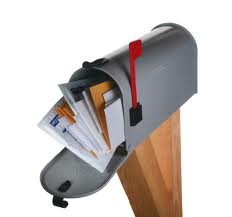 Yesterday, my blog post titled “Take great care when trying to reactivate your LYBUNT donors” focused on a direct mail story of mine that I thought contained some valuable lessons for all of us. Today, I will attempt to pivot and start a discussion about simple things you can do to reactivate lapsed donors at the end of the year.
Yesterday, my blog post titled “Take great care when trying to reactivate your LYBUNT donors” focused on a direct mail story of mine that I thought contained some valuable lessons for all of us. Today, I will attempt to pivot and start a discussion about simple things you can do to reactivate lapsed donors at the end of the year.
Last week, I spent the entire week in Indianapolis at Boys & Girls Clubs of America’s Midwest Leadership Conference as an exhibitor and trainer. When I saw one of my favorite bloggers — Gail Perry at Fired-Up Fundraising — as a general session speaker, I got very excited because she is a bundle of energy when it comes to fundraising.
As she dazzled the audience with her fundraising stories, she turned her attention for just a moment to the idea of reactivating lapsed donors. She talked about the boring, ineffective and sometimes upsetting LYBUNT letters (like the one I talked about in yesterday’s post) that too many non-profit organizations use at the end of the year to re-engage lapsed donors. While direct mail is probably a necessary re-engagement tool, Gail suggested that throwing a party for some of those donors might be a better strategy. She shared a story about such a party that she had themed:
“We love you, we miss you, we want you back!”
These 10 simple words got my mental wheels turning. I envisioned a Thanksgiving or holiday themed event with a room full of lapsed donors who didn’t pay a penny to attend. I pictured mission-focused activities and possibly even activities (e.g. focus groups) designed to solicit input on how to improve your fundraising and donor communication programs.
 Hmmm . . . how does this strategy compare to the HRC letter strategy that I talked about in yesterday’s post? For me, it feels like night and day. I like Gail’s suggestion of throwing a party for the following reasons:
Hmmm . . . how does this strategy compare to the HRC letter strategy that I talked about in yesterday’s post? For me, it feels like night and day. I like Gail’s suggestion of throwing a party for the following reasons:
- It feels personal
- It is what we do with our family and friends (and aren’t donors part of our extended family and friends circle)
- It is fun and energetic
- It fits with the spirit of the season
- It sends a donor-centered message rather than a “me-me-me” message
For some non-profit agencies that have a large direct mail program and hundreds (or thousands) of lapsed donors, this strategy might be a little more difficult to implement. However, this problem is easily overcome by segmenting your LYBUNT report into two lists: 1) those who get invited to a party and solicited at the event or using a follow-up solicitation letter AND 2) those who just get a well-crafted, personal LYBUNT letter that doesn’t use “guilt” as the message.
There is literally a bushel basket full of good ideas and best practices when it comes to reactivating your lapsed donors at the end of the year. Throwing a party is just one of those ideas.
Would you please take 60 seconds out of your busy day and share one idea from your agency’s year-end LYBUNT strategy playbook? You can easily and quickly do this by using the comment box found at the bottom of this blog page. Please? After all, we can all learn from each other.
Here’s to your health!
Erik Anderson
Founder & President, The Healthy Non-Profit LLC
www.thehealthynonprofit.com
erik@thehealthynonprofit.com
http://twitter.com/#!/eanderson847
http://www.facebook.com/eanderson847
http://www.linkedin.com/in/erikanderson847














